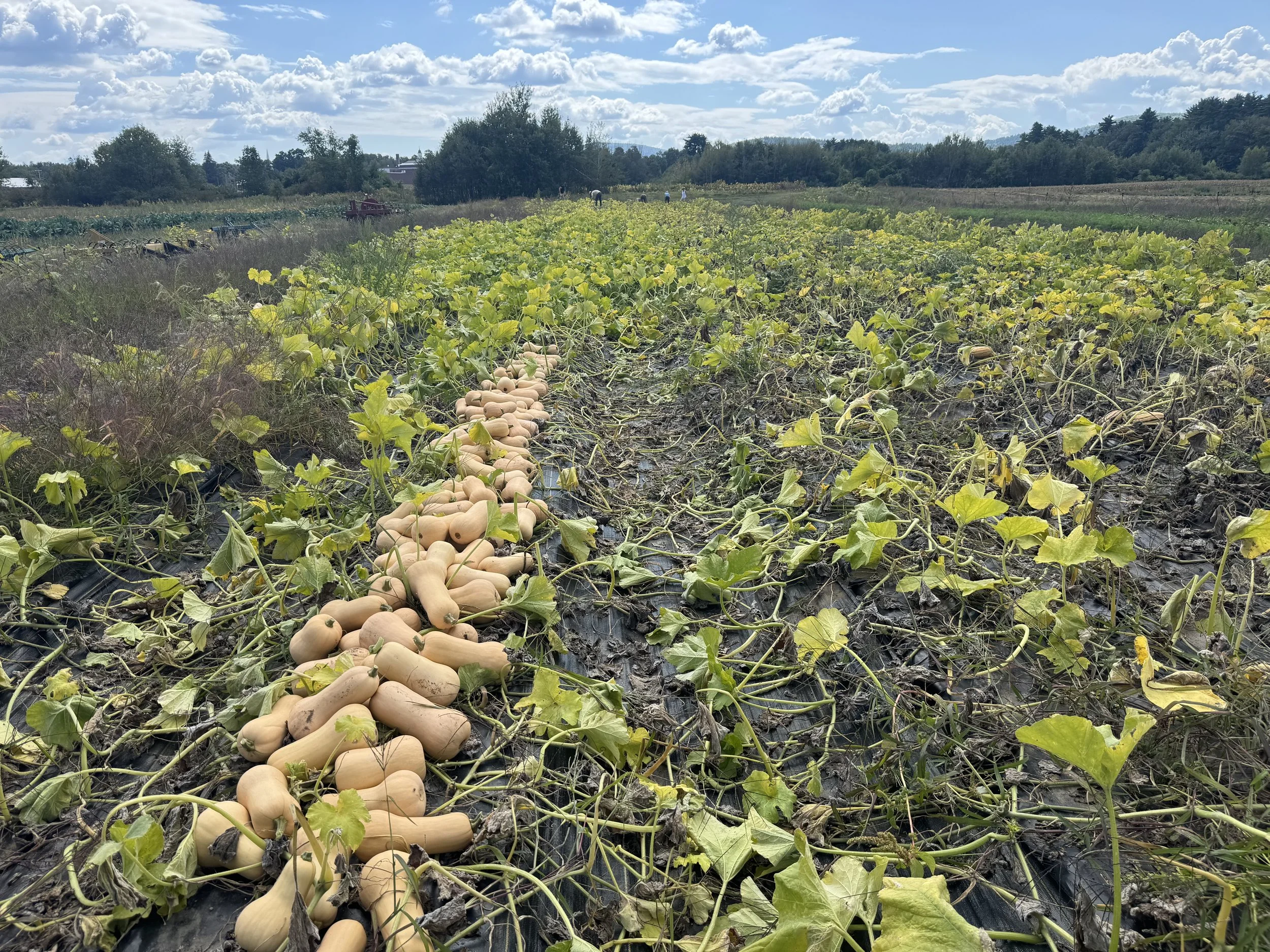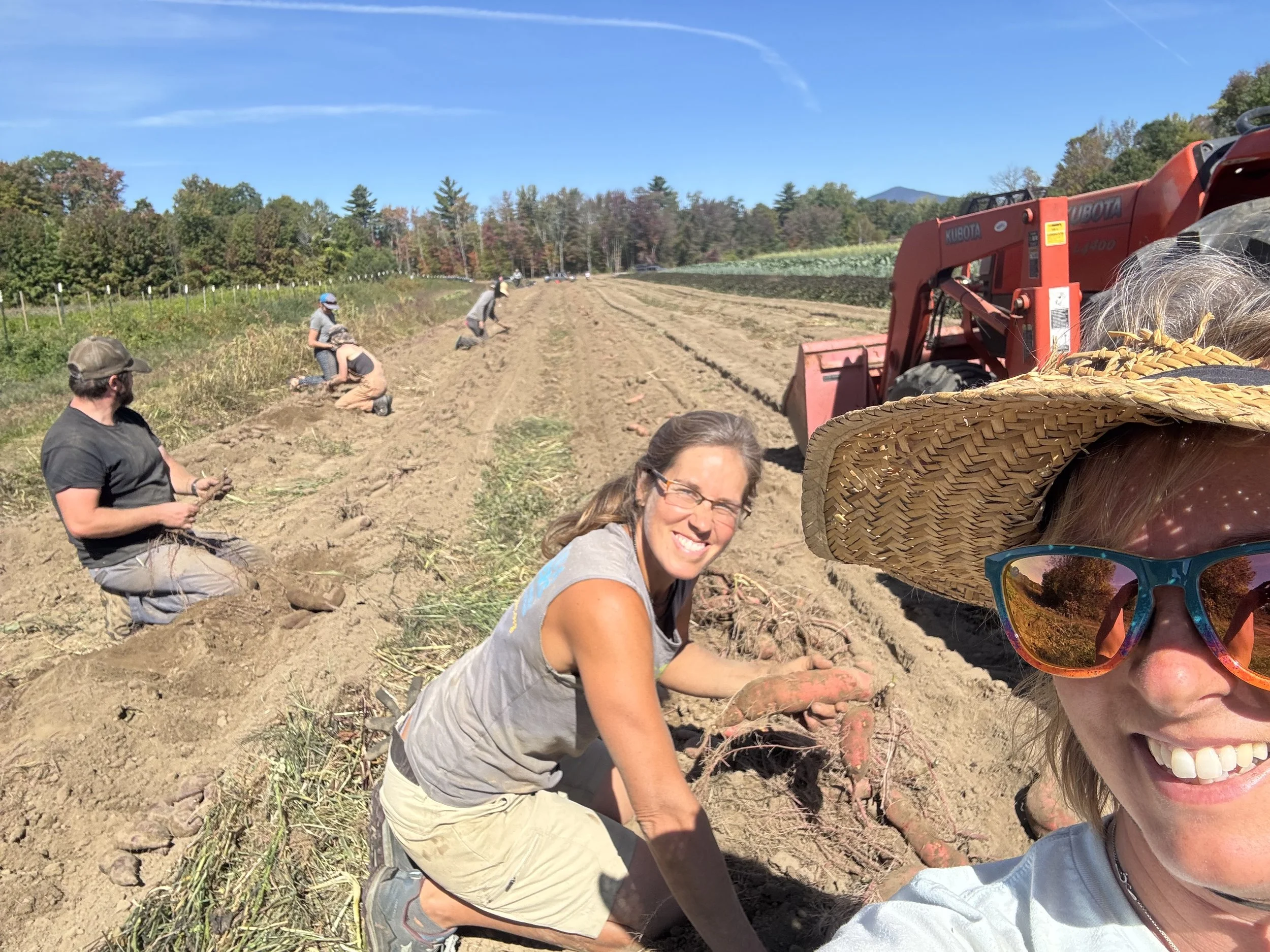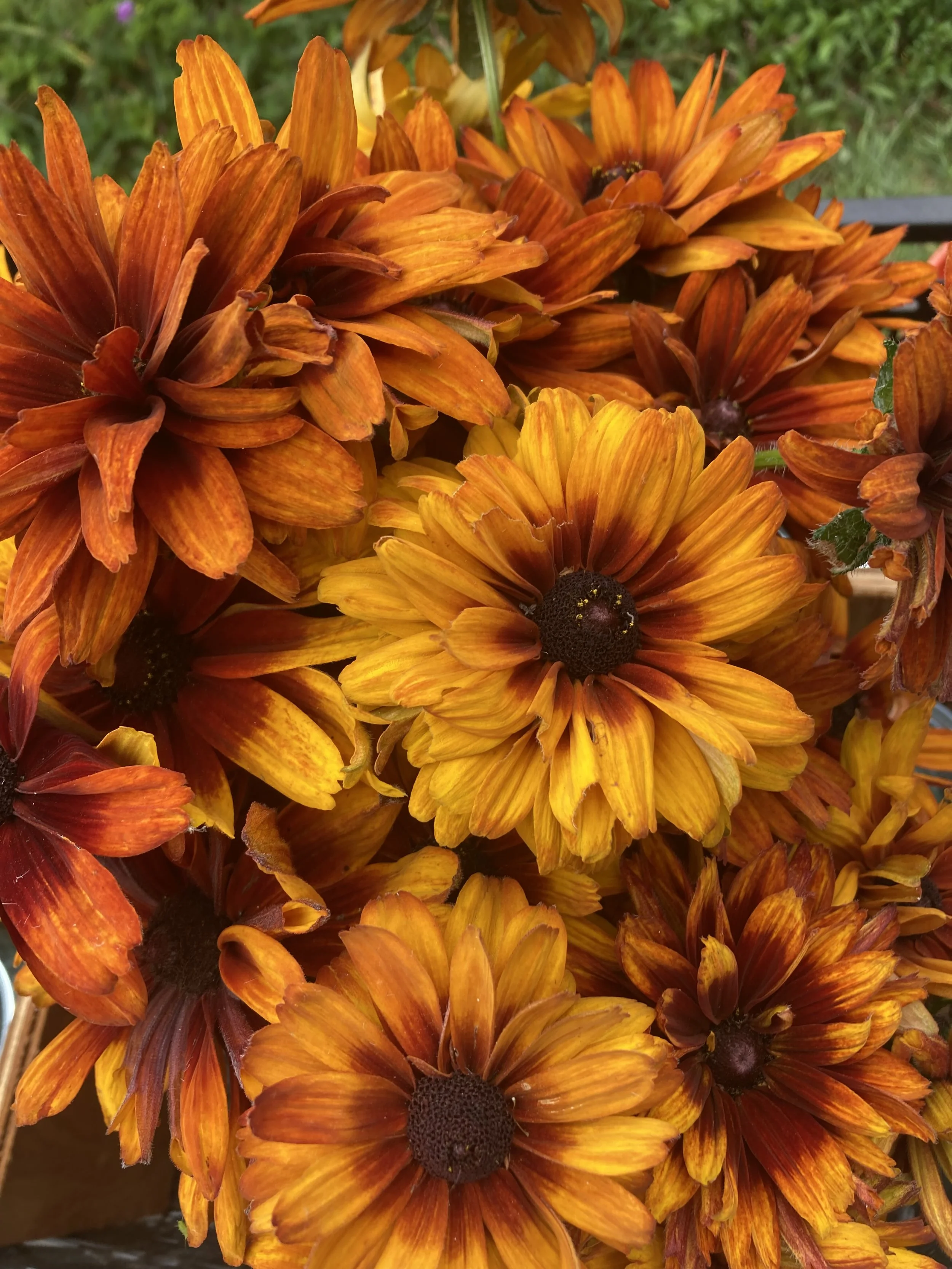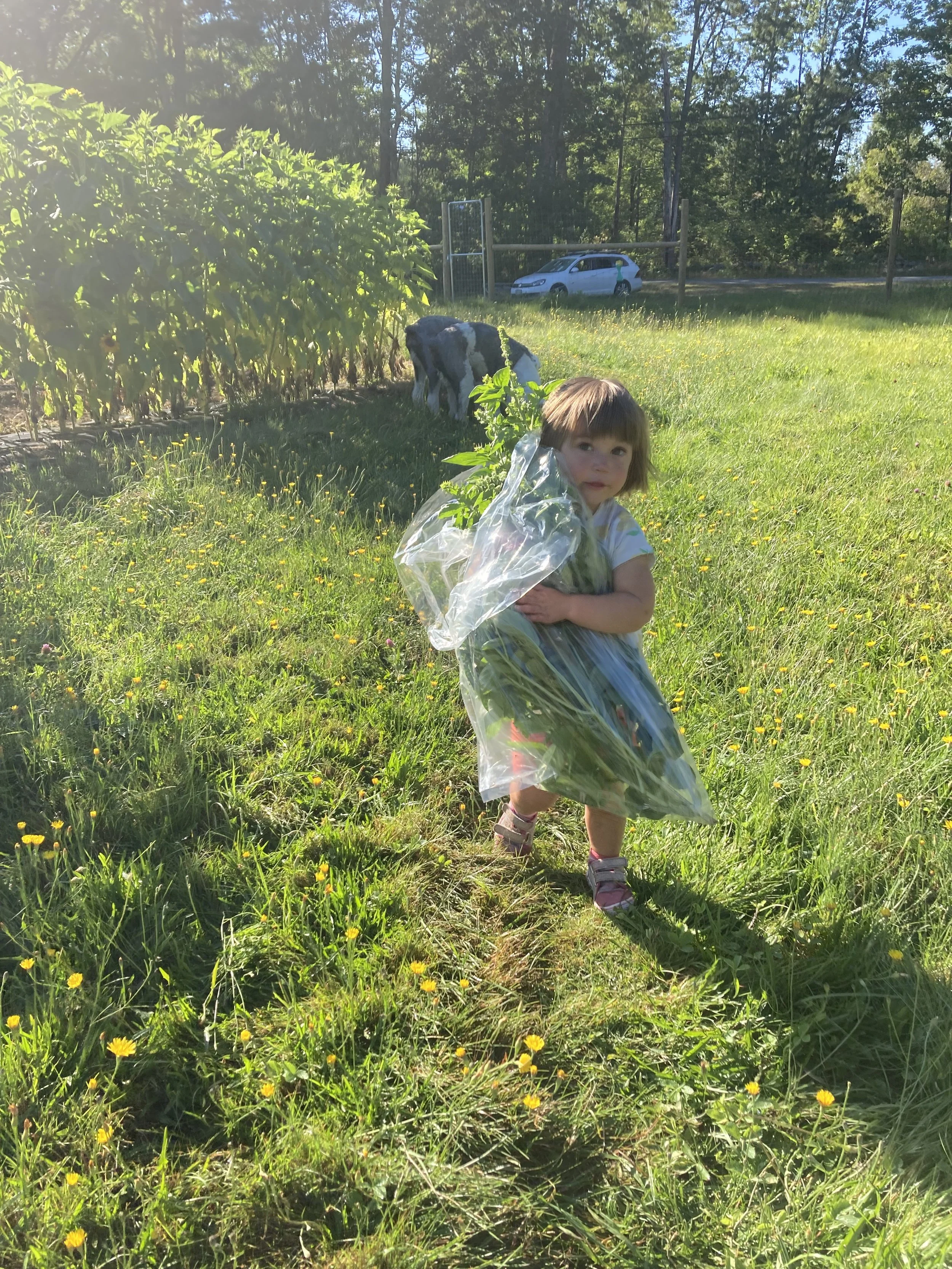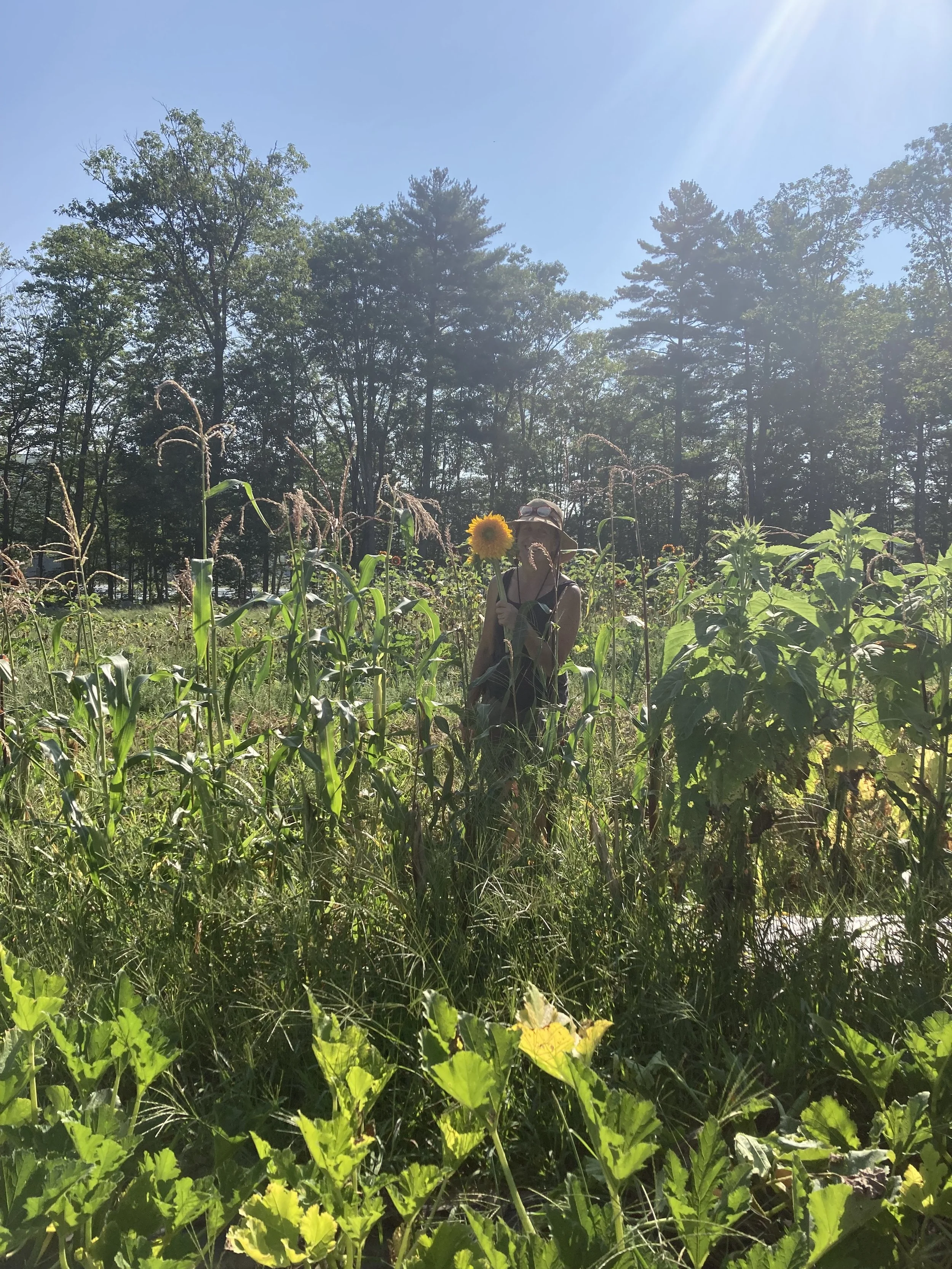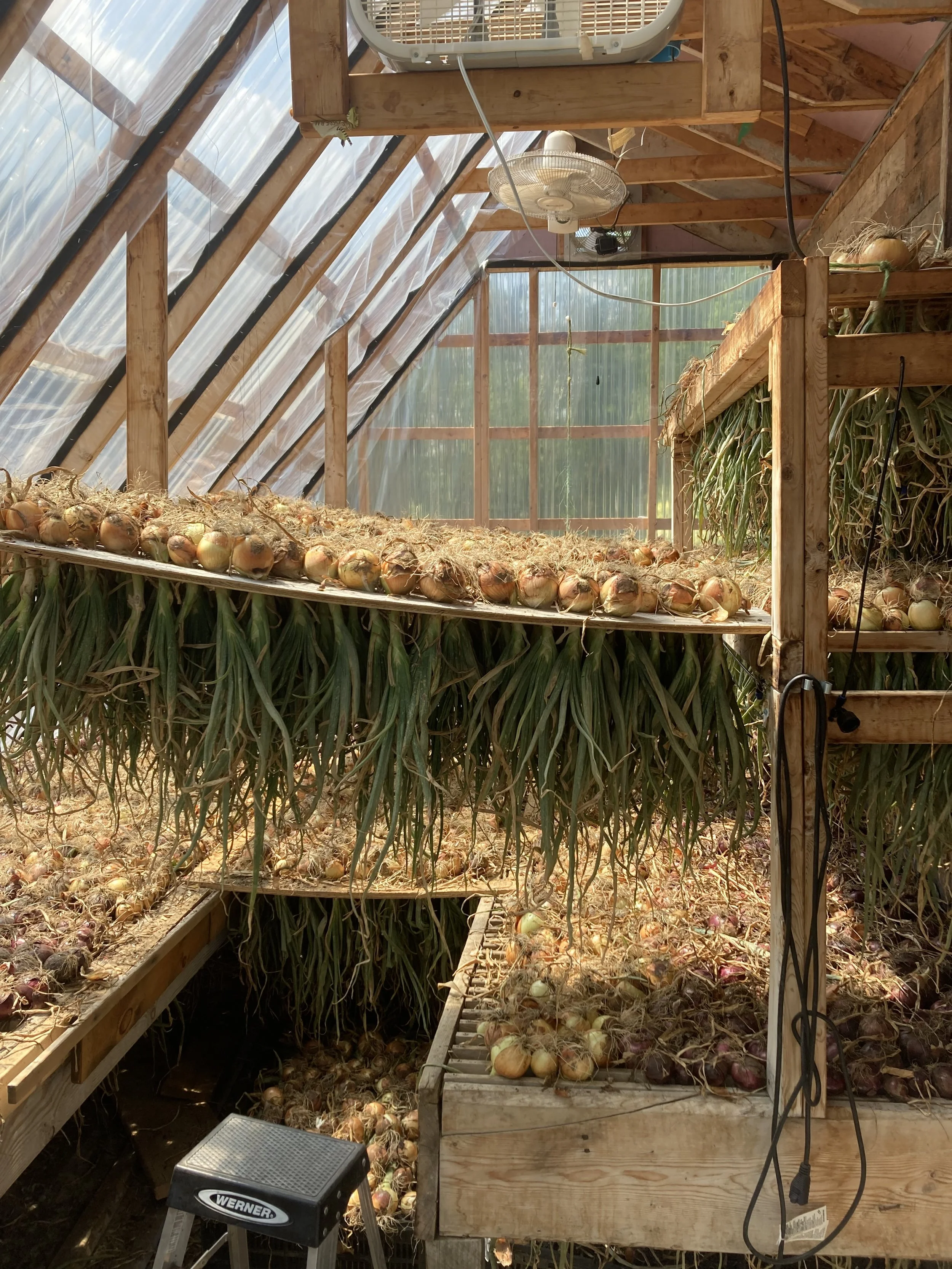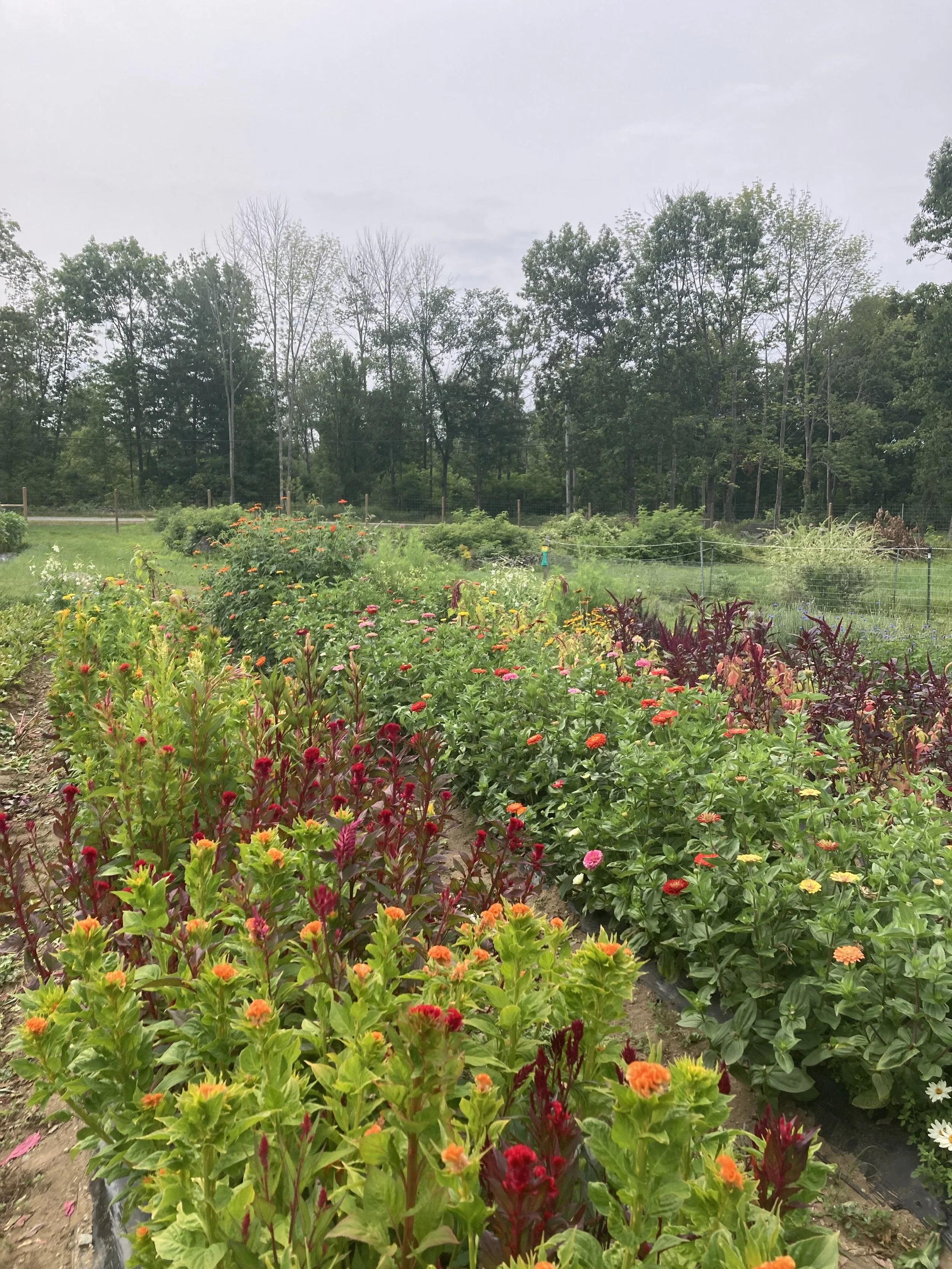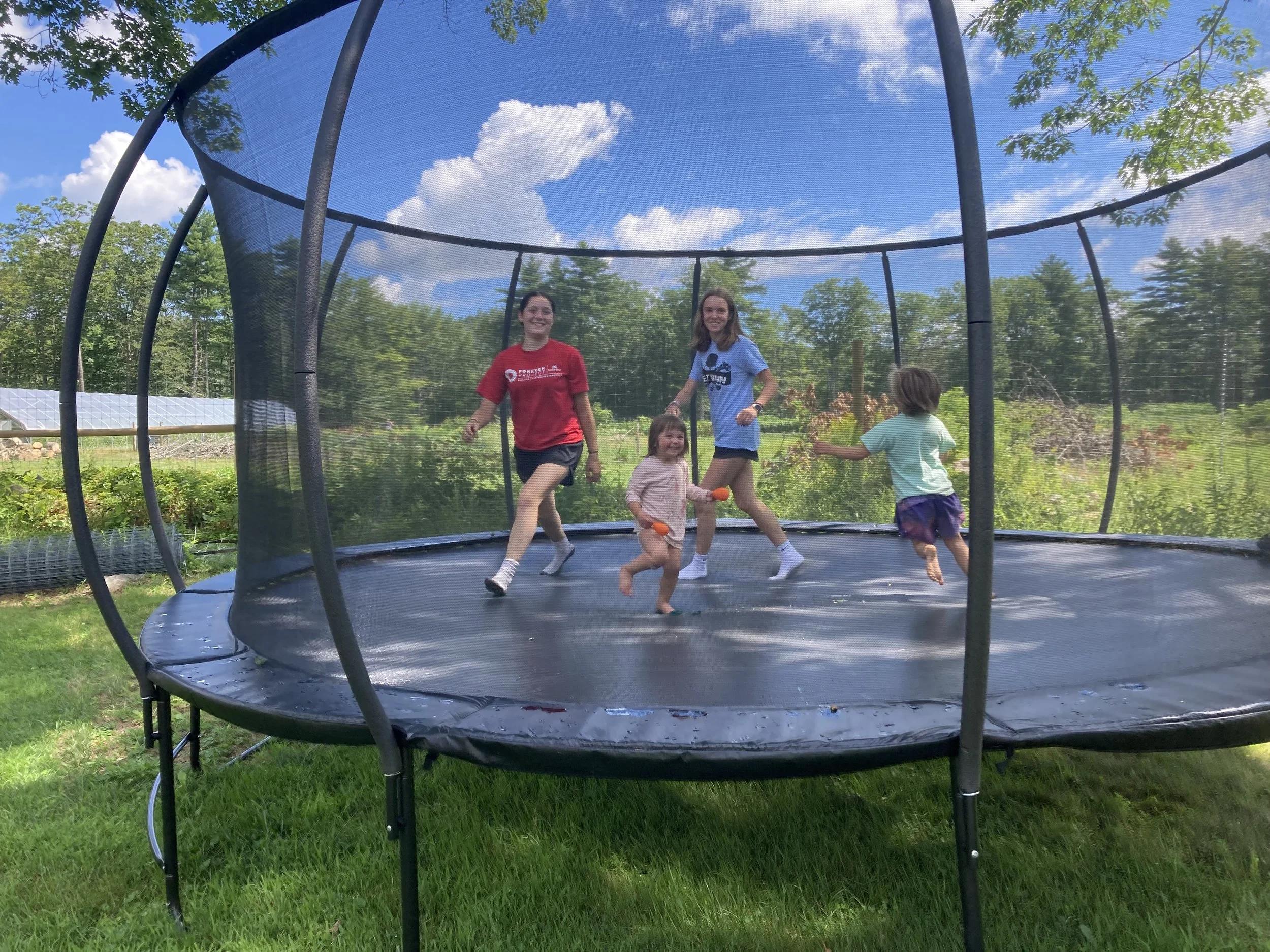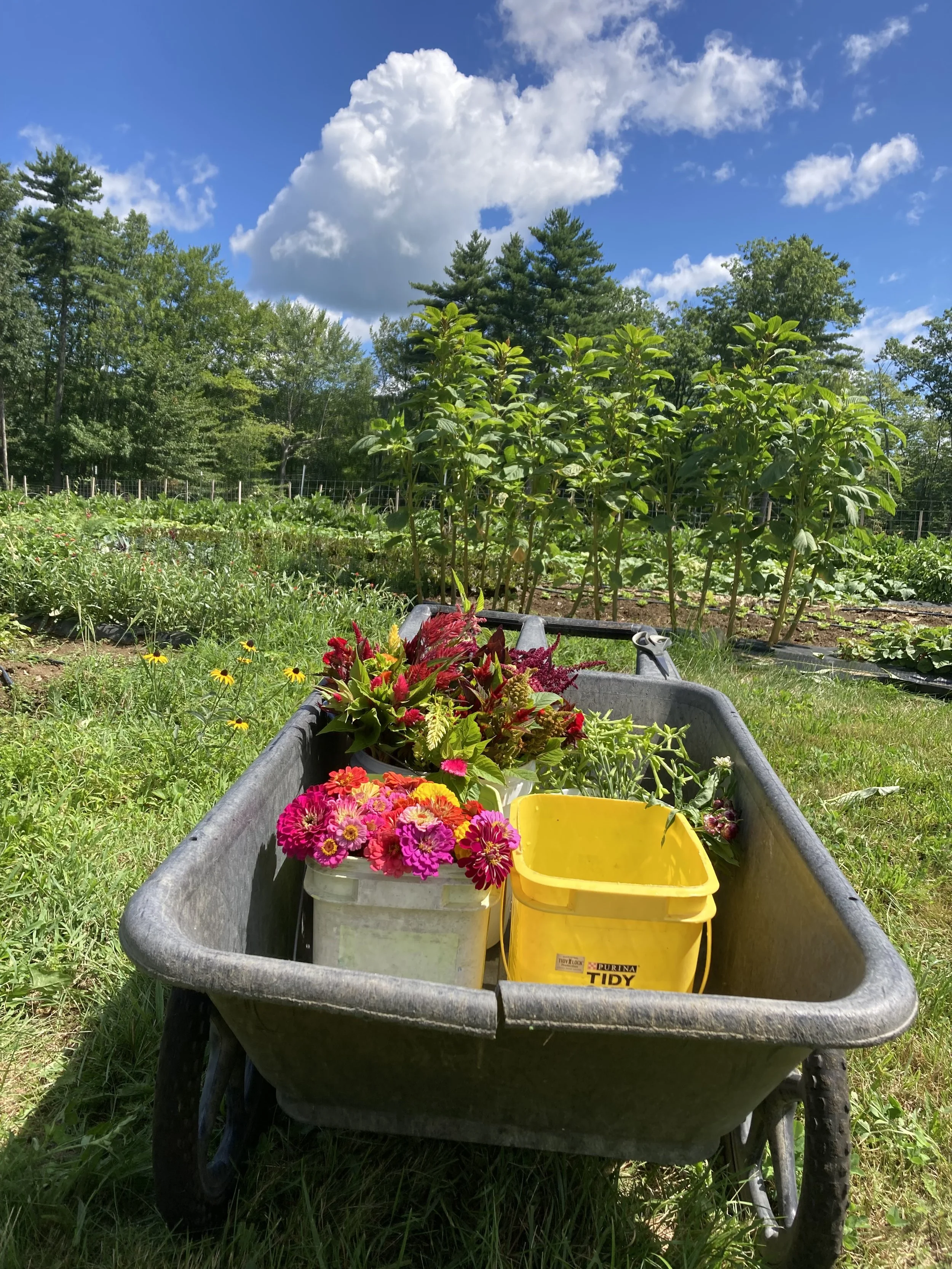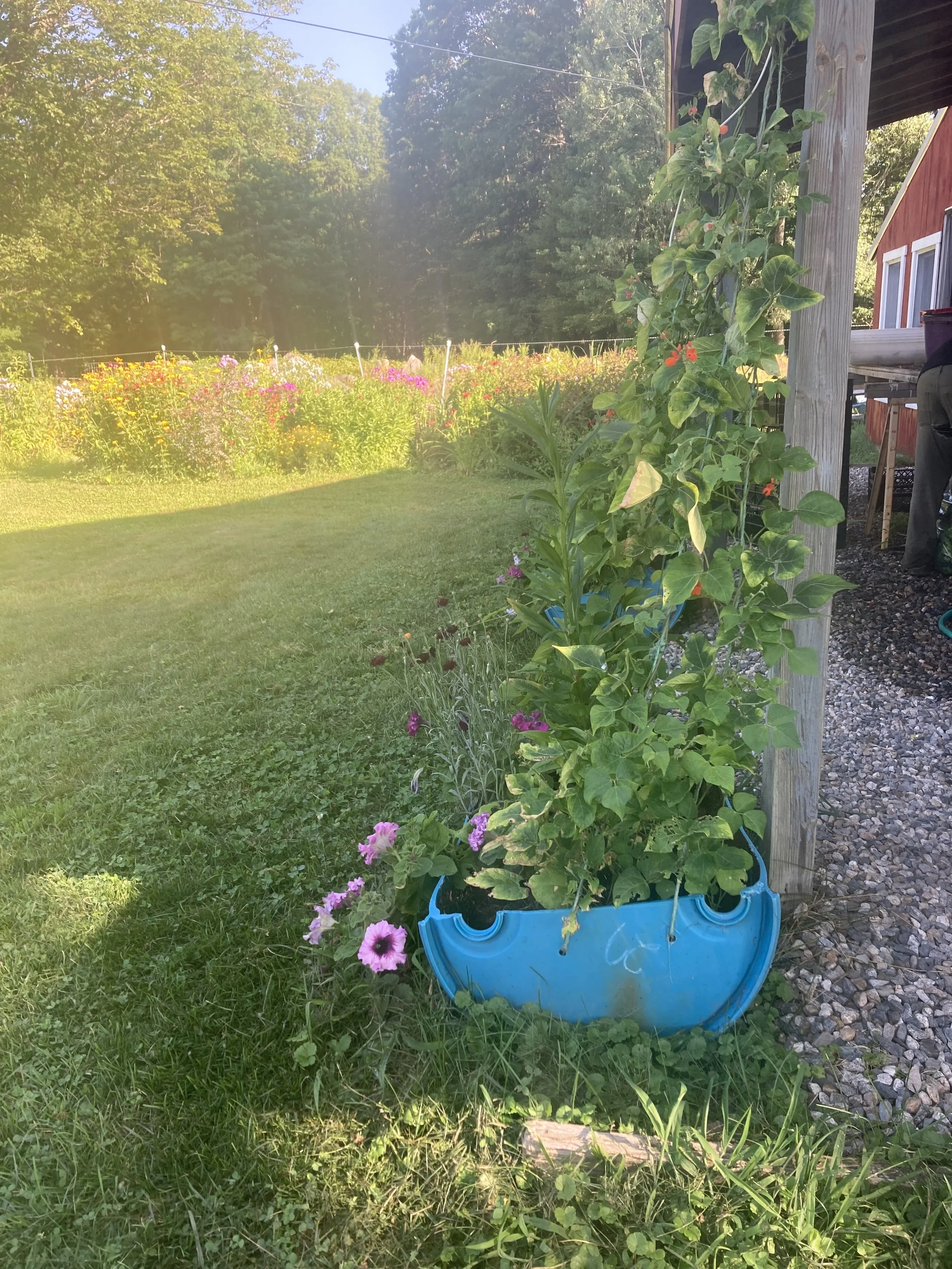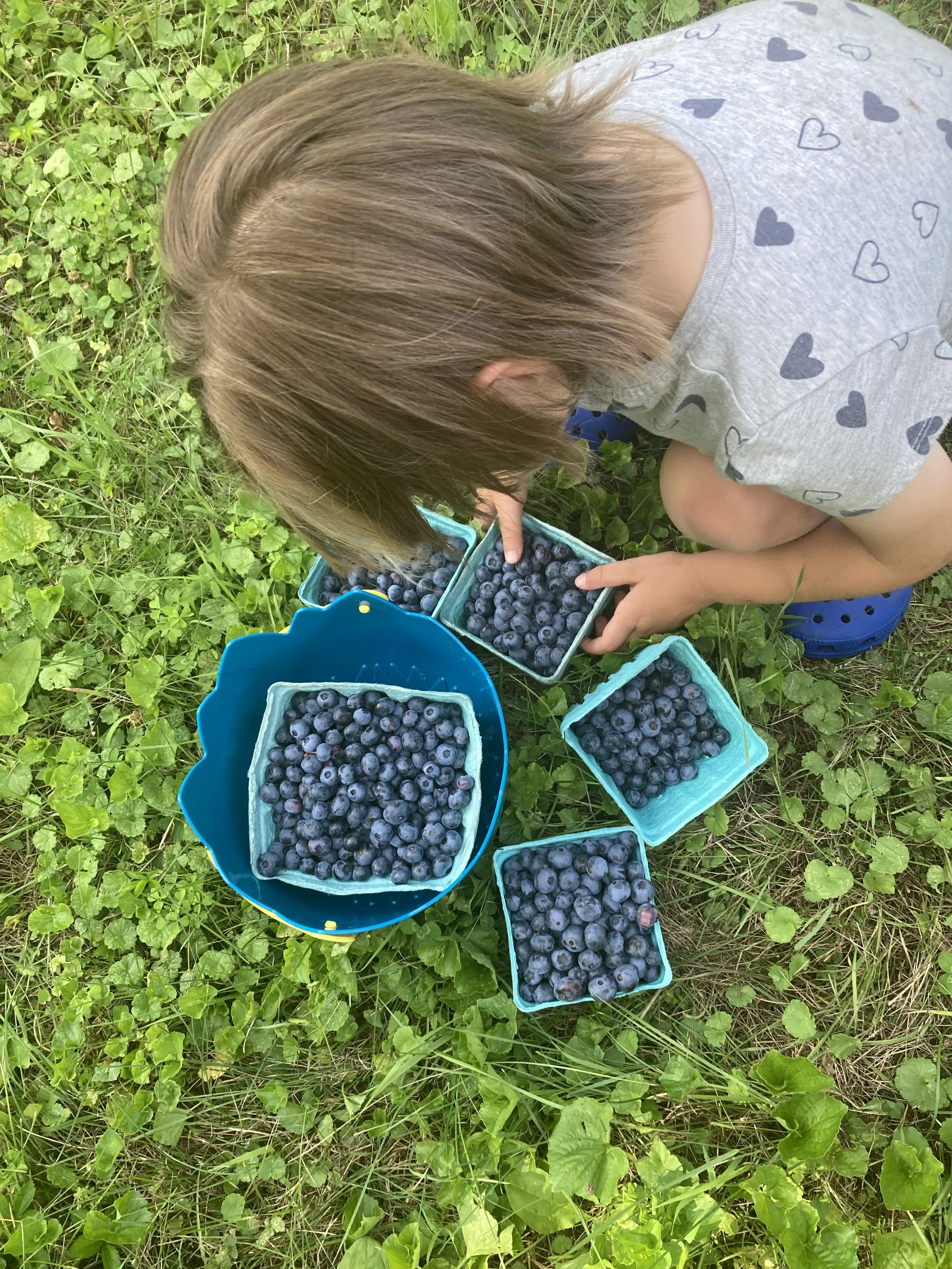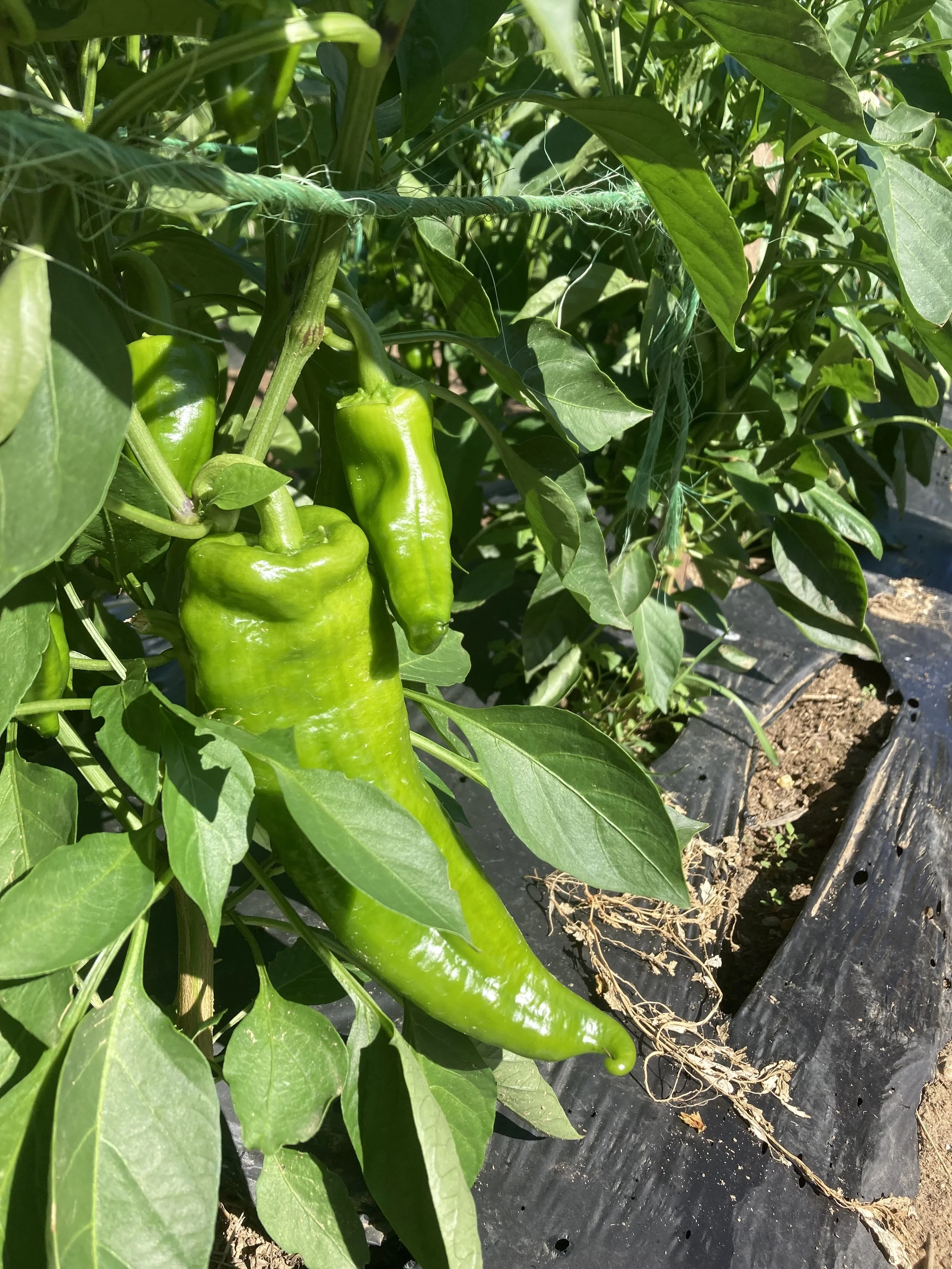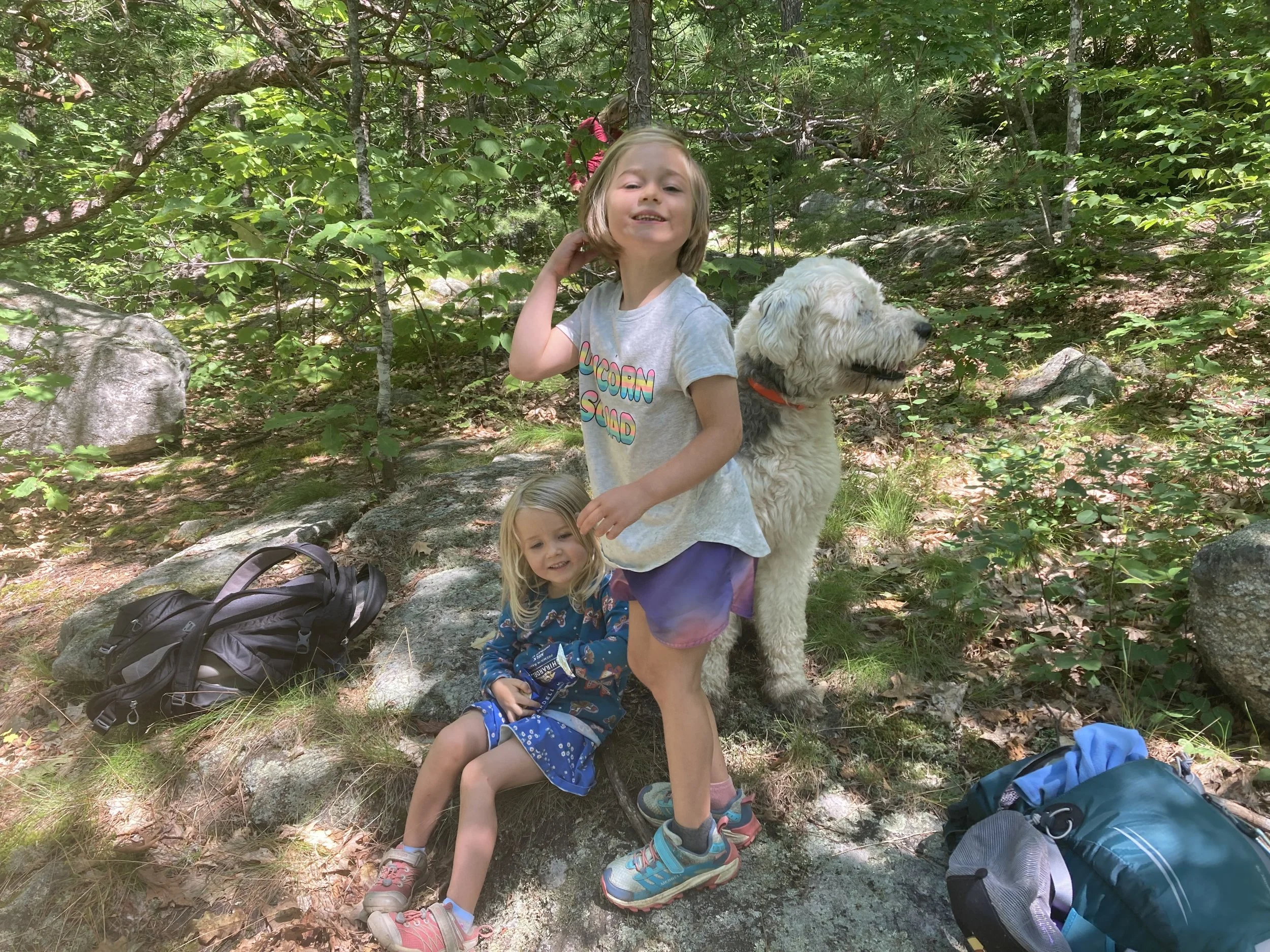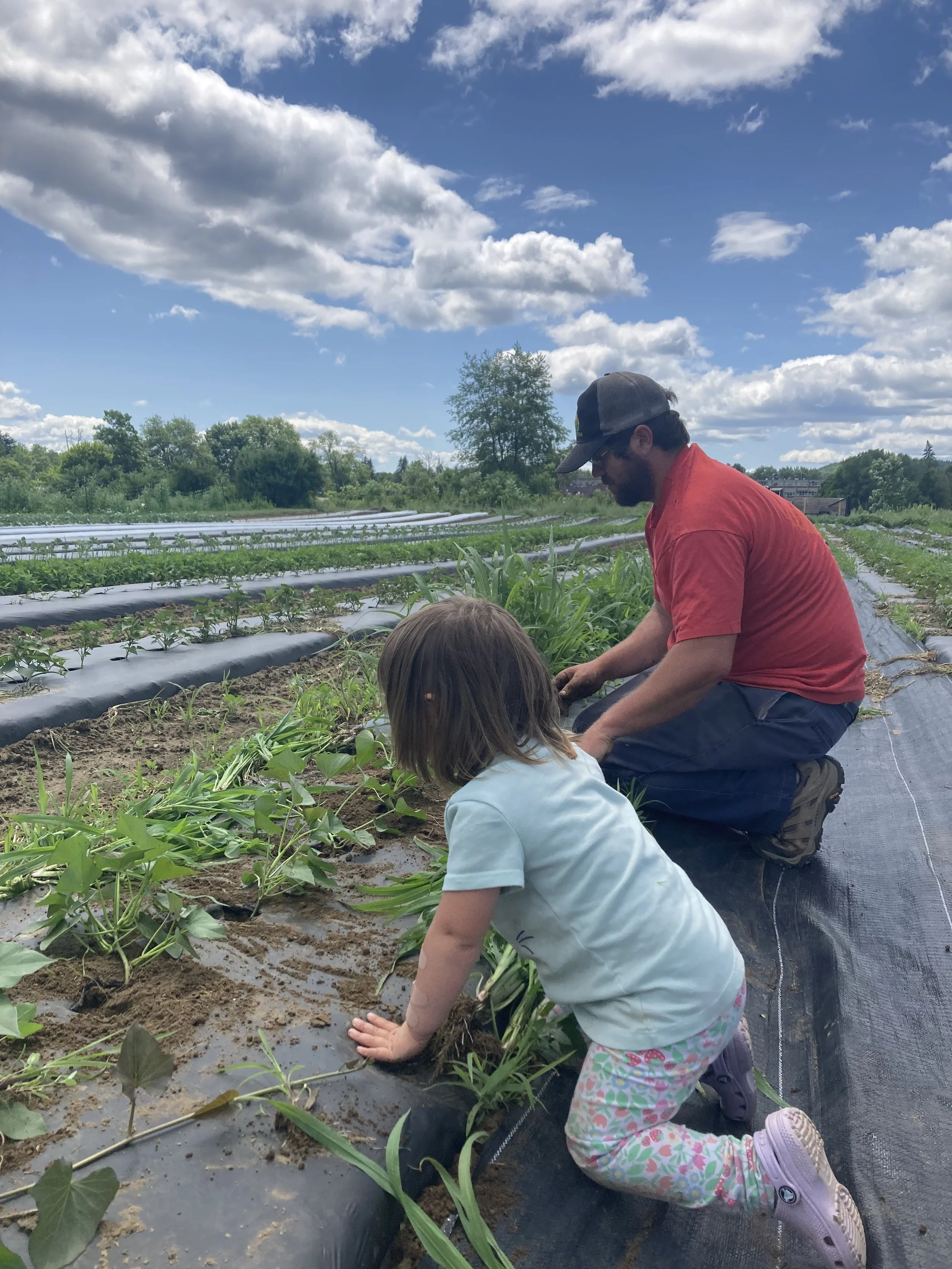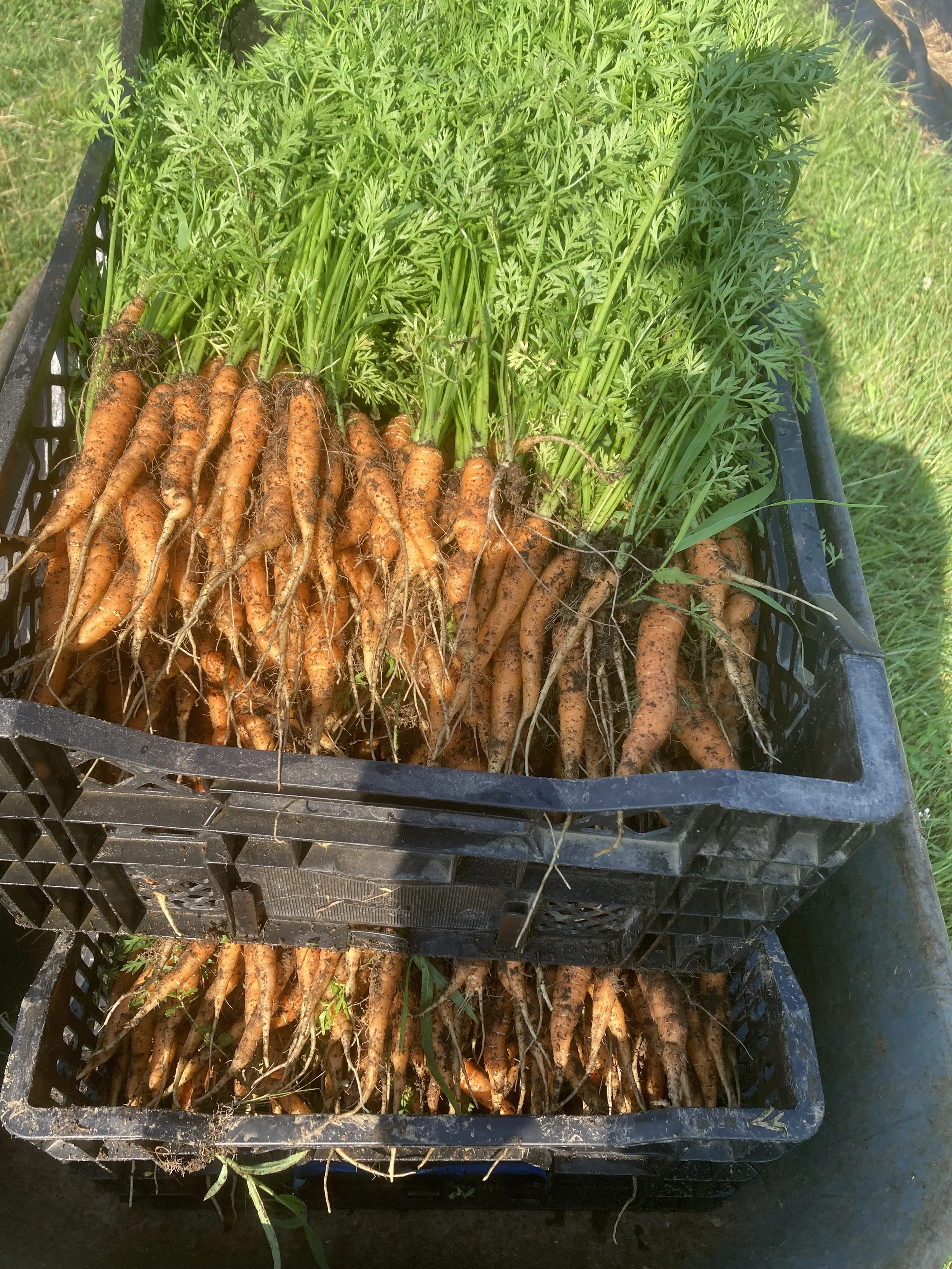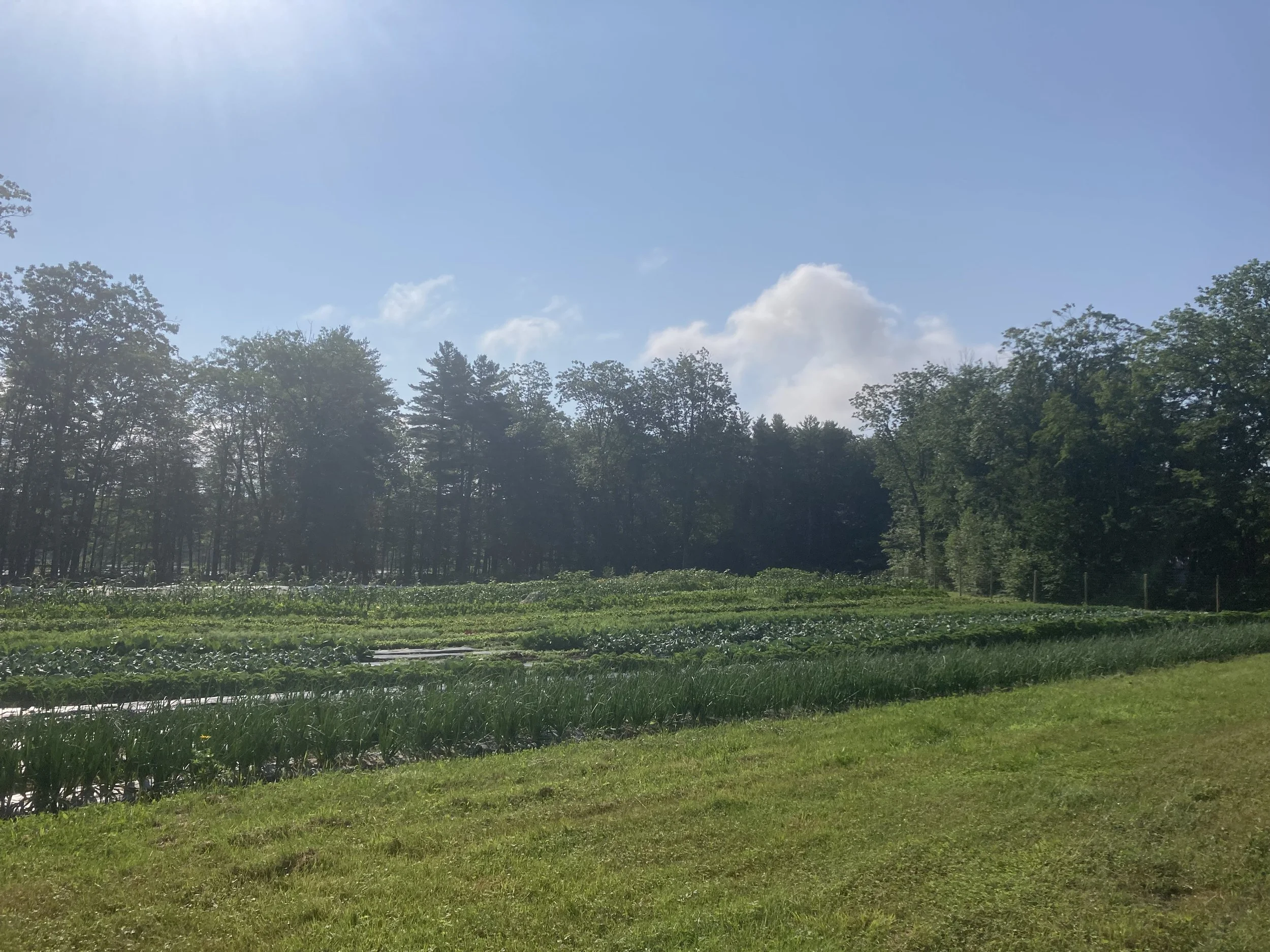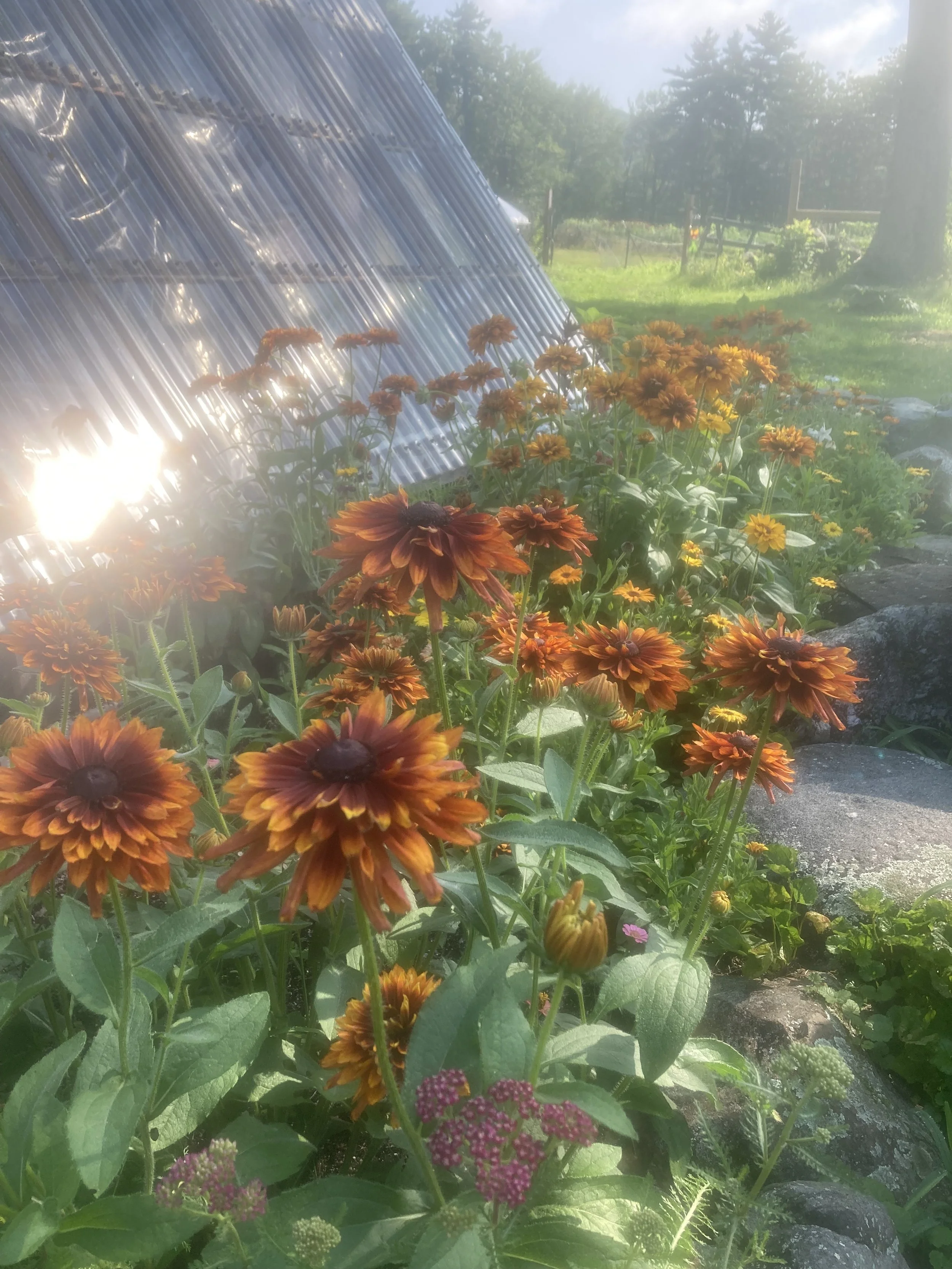Summer C.S.A. Sign-ups http://www.hosacfarm.com/csa
Go to the website to get more details and sign up. The earlier the better for our season planning. Thank you to everyone who has already signed up.
April News
Welcome to Spring!
Dear Friends and Supporters,
As the days grow longer and the temperatures rise, we are excited to welcome the vibrant season of spring here at Hosac Farm. This is a time of renewal, growth, and new beginnings, and we have plenty of updates and events to share with you!
The above paragraph came from the search engine DuckDuck Go's AI assist chat bot. I had been telling Kyle I was having trouble starting a newsletter and he jokingly offered to have chat GPT write one. He later typed in "Farm Spring Newsletter 300 words", and it spit out the above and much more. We laughed. It was both good, and generic, using all those catch phrases of spring and gardening. It was depressing how quickly it generated the newsletter, with all the proper talking points like ground prep and summer share sign-ups. I mentioned the AI experiment at a farm dinner gathering we had this last weekend with our winter cooperative farms, and it got some laughs, and another farmer admitted to using it for a promotional piece he just couldn't get motivated to write independently. For now, I continue to not have much interest in AI beyond mild disgust at humanities never ending quest for automation. I will let you know if somewhere along the way I change my mind.
The ice on the pond broke with the warm spell a few weeks ago. At first just a single large hole opened in the middle, the spot that gets the most sun all day. The ducks and geese that had already returned, crowded into the limited open water. I wished the geese ill thoughts in my head, willing them to stay out of our garden. Then a few days after that, the sun broke the rest of the ice, and with the snow melt and rain, the pond rose back up to above the rock we watch by the dock, our most reliable indicator of the ponds water levels. I'm fascinated yearly by these shy ducks that live on the pond and am always trying to get a closer look that might help identify them. They spook easily. Any detectable movement by human or dog and they exit the water in blurry mass of flapping wings and soft quacks, moving themselves farther away. The body of the males look white from a distance, but it's impossible to tell if it's just a reflection of light on their feathers. Binoculars haven't given me a clear shot. One spring my mom and I spotted them across the pond and went off on an hour or so walk around, thinking we could get a better look from the other side. As soon as we approached, but still too far to see them clearly, they were off, and instantly closer to the farm side while we were now all the way on the other. Their sudden spook when I'm out walking often alerts me to their otherwise unnoticed presence. Joni and I walked around the pond a few weeks ago and somehow approached these ducks without spooking them. It was the closest I've ever gotten to them, especially impressive considering we had with us a loose dog running wild through the woods, and Joni keeps up a constat stream of chatter even when hiking. We were up on a high point overlooking the pond, at a neighbor's small cabin, and perhaps the height difference blocked our noise and the bird's sightline. We were still further away than I would have liked to get a firm ID, but we were close enough to see distinctive white on the chest and a very obvious drooping black crest on the head of the male. Joni was able to hold in conversation for a short period and I tried unsuccessfully to take pictures of the ducks thinking I could zoom in later, but they quickly became wise to our presence and flew away.
Farm Happenings
We applied for a Resilient Food Infrastructure Grant last fall targeted at strengthening Maine's middle of the supply chain (post-harvest activities like packing and transporting). We asked for a Ford Cargo Van. We have severely outgrown our truck and Subaru, often limited on what we can bring to markets and other deliveries, leaving produce behind and making multiple trips especially in the winter. We were notified last week that we have been recommended by the state of Maine to receive this grant. We are awaiting a contract, and it is not official until that is signed in hand. We are cautiously excited, and without any unforeseen hold ups in funds being released by the USDA we hope to have this in use for this farming season. The state has indicated that they will be sending out contracts in the next few weeks. Maine indicated that they had a high number of applications, so we are very grateful to have been selected. We received help in various ways with our application, including many 'letters of support" from members, neighbors, and local businesses. If this all goes through it will be a huge boost to our business giving us a farm specific vehicle, allowing us to transport more produce. It also alleviates the fear of needing to make a new vehicle purchase in the next few years, an impossibly expensive purchase.
We have decided to take a pause on the solar project. Although we were awarded this grant, the funds initially got held up with the administration change, and there is still some lack of clarity if they will be released. For this project we would have had to front all of money and then been relying on a reimbursement along with a tax credit. At this point in time, we are not comfortable with that arrangement and feel it would be too financially risky without enough benefit for the farm. Perhaps we will revisit this later.
We decided to go for the deer fence. This will be a huge project for us, requiring a small loan, but think it will be worth the peace of mind and reduction in labor hours long term. We have hired a company out of southern New Hampshire to professionally install this, and it is projected to be started and completed in about 5 days during the end of June. We will still have to set up our temporary system this year, but I will take pleasure in telling myself as I am doing it, that it's for the last time.
We have struggled for years in designing a logo for our farm. This is what we have come up with, a tribute to our seasonal yearly resident Killdeer.
![IMG_5451[1].JPG](https://images.squarespace-cdn.com/content/v1/56d499d28259b57a201ef2af/1604959631417-QG2SU3O3RCG10VZSEYHC/IMG_5451%5B1%5D.JPG)
